Electric cars used to be a far off vision of the future. But, as it turns out, the future is already here! Did you know that Volkswagen has got an electric car out of the oven, and ready for production? Want one? Sorry. Really, really, pretty-please want one? Nope. Not even if you’re stinking rich? Not even. As this pristine white Golf sits in front of you, you cannot actually buy it just yet.
But if you can be but a wee bit patient, in about one-and-a-half years, theoretically you will be able to buy a production electric Golf (complete with the somewhat torturous Blue-E-Motion name), but it will be on the next-generation Golf, based on the all-new version of the preternaturally popular hatchback, riding on the new chassis that will also underpin a bewildering array of Volkswagen, Seat, Skoda and Audi models in the future.
The only external changes compared to a petrol or diesel Golf are the absence of an exhaust system and the positioning of electric charger points behind the usual filter flap and behind the VW roundel on the front of the car. Boot capacity has been reduced from 350 litres to 238 litres, but seating capacity is unchanged for five people. The same as the combustion engine version, the Golf Blue-E-Motion is 4,199 mm in length and 1,786 mm wide.
The Mk VI Blue-E-Motion Golf tested here has been built as a seriously limited production run, merely to demonstrate Volkswagen’s commitment to battery motoring and to give at least a sneak preview of what the production electric Golf will be like. A fleet of five-door, five-seat concept is already on the road in Germany and undergoing extensive testing. These test cars are fitted with an electric motor that delivers maximum power of 85 kW and a continuous power output of 50 kW with maximum torque of 270 Nm for a top speed of 135 km/h.
Read the full scoop on the electric Golf after the jump.
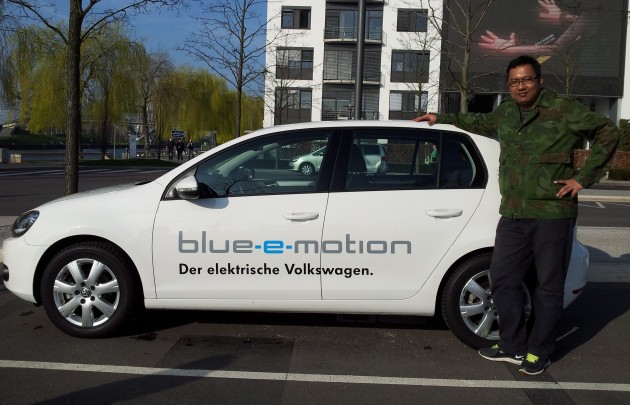
The VW Golf Blue-E-Motion, which we managed to experience on the streets of Wolfsburg, Germany back in March, is fitted with a lithium-ion battery that currently gives the Golf a range of around 150 km. But VW expects this range will be significantly increased by the time the Blue-E-Motion Golf goes into production. We are however unable to furnish you with any details concerning battery charging performance, since the VW technicians on hand were not too receptive about answering queries about how long it takes for the car to be fully juiced up.
Open the door, compress the seat cushion and the Blue-E-Motion feels and looks as standard as any other Golf – quietly stylish, beautifully built, reassuring in its familiarity. The only clue that this Golf is not like other Golfs is the rev counter, which has been replaced by a dial showing whether you’re drawing power from the batteries or scavenging it from the regenerative braking system, and which also shows, in percentage terms, how much of the electric motor’s power you are deploying – rather like Rolls-Royce’s Power Reserve gauge but in reverse order.
All the usual Golf accoutrements of electric windows, mirrors etc are here, including – perhaps surprisingly, in view of the potential electrical power drain – a heated windscreen and heated seats. The Sat-Nav screen also shows battery levels, and in future versions, is expected to give warnings if a chosen destination is beyond the car’s driving range. The battery management system allows the car’s battery status to be checked using a smartphone app while you are in your office or having breakfast. The Golf’s lithium-ion batteries are kept at optimal working temperature by a secondary cooling system.
Twist the key in the conventional ignition slot, wait for the bing-bong, and off you go. As you pull away the first thing that strikes you is that there is low, muted engine noise. Huh? Surely electric cars are supposed to float silently away? Not the Golf, which artificially generates a soft, engine-like hum, a gently rumbly one, which is designed to warn unsuspecting pedestrians of your approach.
Electric motors deliver all their torque from zero revs, so the Golf Blue-E-Motion surges away with alacrity and with an eerie silence and smoothness. After that, noise from tyres and wind rush is sufficient. With 115 hp from the electric motor under the bonnet and 270 Nm of torque available from the moment you mash the “throttle” pedal, the Golf feels instantly at home sliding into traffic and its 0-100 km/h time of 11.8 seconds is more or less a match for other cars on the streets of Wolfsburg. The expected electric-car trick of huge torquey thrust from zero revs is there, but so is the sense of breathlessness once above 80-90 km/h. The Blue-E-Motion maxes out at a limited 135km/h, but as the acceleration tails off at higher speeds, it’ll take you a while to get there.
While most of us may think of an electric car’s lithium-ion battery as being one complete unit, that’s not the case in the Blue-E-Motion. In the concept car, the battery consists of 30 modules containing a total of 180 lithium-ion cells and the modules are distributed throughout the vehicle in places where the vehicle’s design leaves empty spaces. These places include under the rear bench seat, in the centre tunnel or under the floor of the boot… but not in the space set aside for luggage.
Range, always a thorny issue with electric cars, is 150km on a single charge, 10km short of what Nissan claims for its rival Leaf. But then, this Golf is not the production Golf, and Volkswagen’s engineers claim that the on-sale version will have a 160 km range and hint, tantalisingly, that it may even hit a very useful 200 km. That’s because, although the electric motor and batteries will be more or less unchanged for production, the physical chassis will be lighter than the current Golf’s, giving the batteries less work to do.
Displays on the dashboard allow the driver to see how much energy is being demanded by the “electric pedal” at any given moment on the kW gauge (replaces the classic tachometer); drivers strive to keep the kW reading as low as possible practically intuitively. A range indicator is also integrated in this round instrument. The speedometer, located on the right side as usual, integrates another small gauge that provides information on the battery charge state.
A great feature is the display of regeneration intensity in the multifunction display between the kW instrument and the speedometer. In battery regeneration, the driver has the option of pre-setting the braking energy recovery strategy over four stages (D to D3) via the automatic gearshift lever or gearshift paddles on the steering wheel.
In the lowest stage (D), the car “sails” as soon as the driver’s foot leaves the pedal – now the Golf Blue-E-Motion moves with very low drag; it is only “slowed” by the rolling resistance of the tyres and air resistance. In the D3 stage, or B for braking, on the other hand, the maximum amount of kinetic energy is recovered and fed to the battery. In addition, the electrical energy consumption of the automatic climate control unit and its blower can be called up in the multifunction display.
Different driving profiles control comfort, dynamics and range. In addition, an active driving profile can be set; this lets the driver select priorities in advance: between maximum range, maximum comfort and maximum dynamics. The selected profile then pre-configures the power of the electric motor, air conditioning control, maximum speed and battery regeneration strategy. Thus, the Golf Blue-E-Motion offers the three profiles Normal, Comfort+ and Range+. In the Comfort+ profile, the full 85 kW of power is available; in this mode, the Golf Blue-E-Motion can attain the specified top speed.
When the driver activates the Normal mode, power is reduced to 65 kW and top speed is lowered to 115 km/h. In the Range+ mode the engine controller limits power to 50 kW and the vehicle is limited to a maximum speed of 105 km/h. At the same time, the air conditioning system is completely deactivated. The selected profile is shown in the multifunction display.
The Golf Blue-E-Motion is charged via a plug connector behind the folding VW logo on the radiator grille. A pictogram of a plug connector in the multifunction display indicates that the charging cable is correctly inserted and locked. During active charging an LED also flashes in the charge state indicator, and the charge level shown in the indicator is continually updated.
On the road, the Golf Blue-E-Motion is mega easy to drive and if you put the Golf’s drive selector lever in ‘B’ for maximum regenerative braking you can drive the car with one foot and only one pedal, as the ‘engine braking’ is so strong immediately after you take your foot off the accelerator. If you have driven another Golf before, the Blue-E-Motion feels remarkably similar, with safe and predictable handling despite the extra 205 kg weight of the lithium-ion batteries and necessary energy converters. But this, however, makes the car slightly less keen to change direction. However, spring rates are stiffer to cope with the extra weight, so the car does manage to feel quite sporty still.
With the exception of a slightly firmer ride, comfort is just like a normal Golf, with standard seats that are even heated (quite necessary in Europe). The instrument dials though are different – next to the speedometer is a dial which shows how the car’s power is being used. Two smaller dials show how much charge is left in the 26.5 kilowatt-hours batteries and what range this allows.
Obviously, there is the usual electric car benefit of zero pollution at point of use – though maybe not where the electrical power is generated. Apart from that, greenies will also be pleased to note that Volkswagen says it is close to attaining a 95% recyclability level for its cars through manufacturing processes at its latest facilities. Life cycle carbon emissions for a typical electric car are around 100 g CO2/km based on the current German electricity mix.
Looking to sell your car? Sell it with Carro.

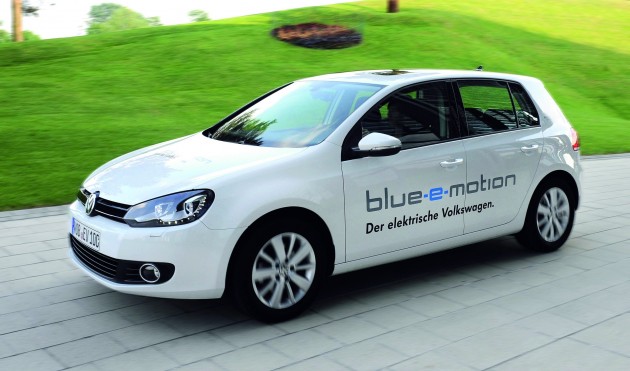
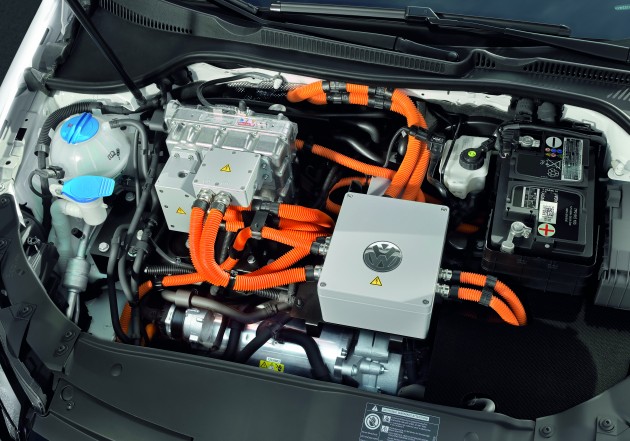
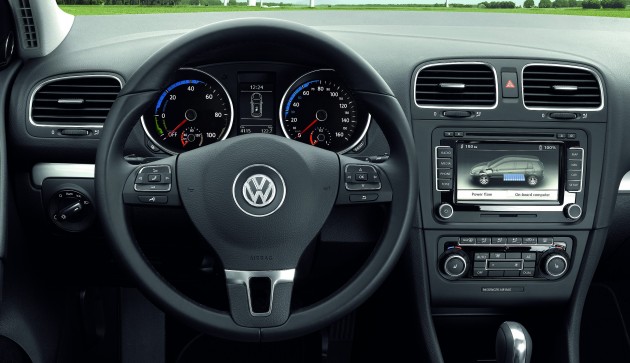
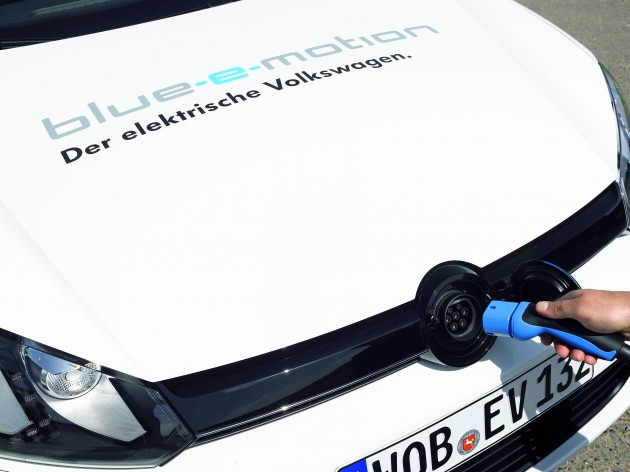
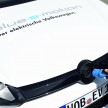
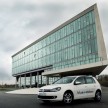
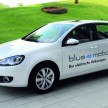
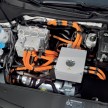
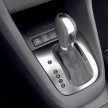
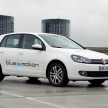
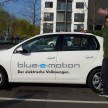
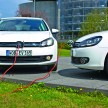
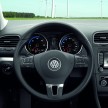
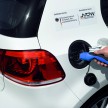
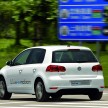
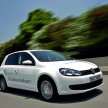
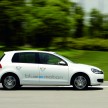
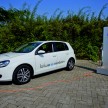
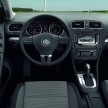
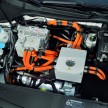
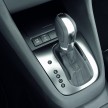
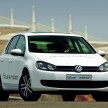
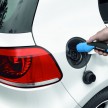
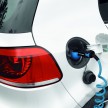
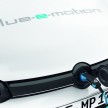
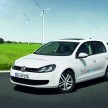
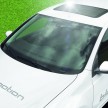
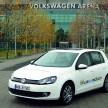
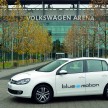
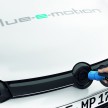
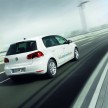
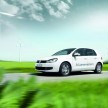
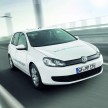
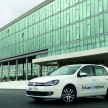
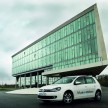
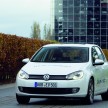
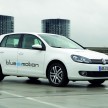
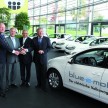
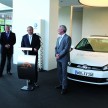
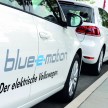
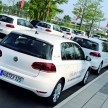
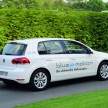
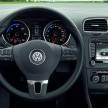
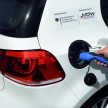
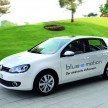
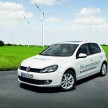
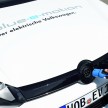
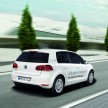
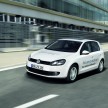
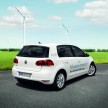
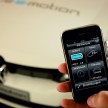
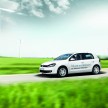
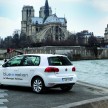
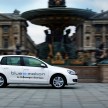
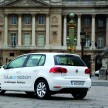
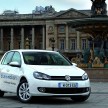
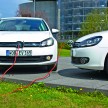
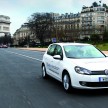
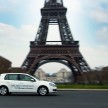
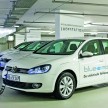
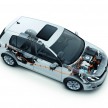
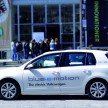






proton should rebagde this..nuff said
You hell!!!
Enough with Proton!!
what wrong with you?..basher..
this car is freaking slow. I rather get a kancil rather than drive a slowpoke with a VW badge that cost so much more.
tell us when u have purchased your effin “new”, “fast” and “standard” kancil. STANDARD.
put the pedal to the metal, attack corners fast and break hard. lets see if u still walk away in one piece or end up being carried away slower than this “freaking slow car”..if u know what i mean..which i doubt judging by the intelligence level (if any) of your comment.
wow, just wow!
ps proton emas apa cerita?
Sometimes I feel very sad about our future generation who will be forced to drive these types of vehicles due to oil depletion and environmental reasons. They will miss the burble of a V8 and the sound of V12 engines, also the hiss of a blow off valve.
Eventually, electric cars will be able to catch up with their internal combustion counterparts, but the ‘feel’ of driving them will be very different.
@Ellfian – “including – perhaps surprisingly, in view of the potential electrical power drain – a heated windscreen and heated seats”… I’m afraid this explains why you should stick to writing about ICEVs and not EVs (along with the vast majority of your colleagues). In fact, this arrangement deals with passenger comfort and de-misting windscreens in a way that uses only 10% of the energy it would otherwise.
Remember – the ICE chucks 70-80% of the fuel it burns away as wasted heat – heat that an EV has to get from somewhere else and it’s usually the traction pack (battery) and THAT’s what causes a significant range reduction in an EV.
@VW – What a mess! If ever I have seen an EV intended to be nothing more than a ‘compliance car’, this is it. There is nothing in this vehicle that is ‘new’ – it’s just a rather impractical miss-mash of ICE and EV that will almost always occur when you try to push a square peg into a round hole. If a startup like Tesla can achieve a truly revolutionary EV design (the Model S) in only 3 years with its meagre budget and relatively tiny work-force why the hell can’t a behemoth car producer like VW? Answer? They aren’t really interested. Wake up VW! Or you will be left behind!
“(noise maker)…. which is designed to warn unsuspecting pedestrians of your approach” What kind of a total moron at VW thought this was a good idea? The opportunity arrises to turn our ghastly, noisy inner city streets into a calm, clean and peaceful environment and some numpty ‘elf an’ safety’ wallah decides their EV has to make a noise – like, oh yes, a Rolls Royce or Lexus or even a bicycle… all renowned for the noise they make at low speed. Cars have horns, warning stupid pedestrians is one of their functions – use them. Don’t subject us all to this daftness for the sake of a few air-heads who can’t manage to cross a road safely without their Mums holding their hand.
Besides all that, you only have to stand by the road side and watch passing traffic for a minute or two to see (or rather, hear) why this is an irrelevance. Tyre noise, on its own, is more than sufficient to warn reasonably observant people – those who aren’t glued to their iPhones, at least, of the approach of a slow moving vehicle.
@armandd – Yes I’ll miss them too but in a similar way to dirty, noisy, relatively dangerous, fantastically inefficient, lumbering and generally just ‘passé’ steam trains. Electric cars have already caught up with ICEVs and, IMO, overtaken them and you only have to look at Tesla’s Model S to see why.